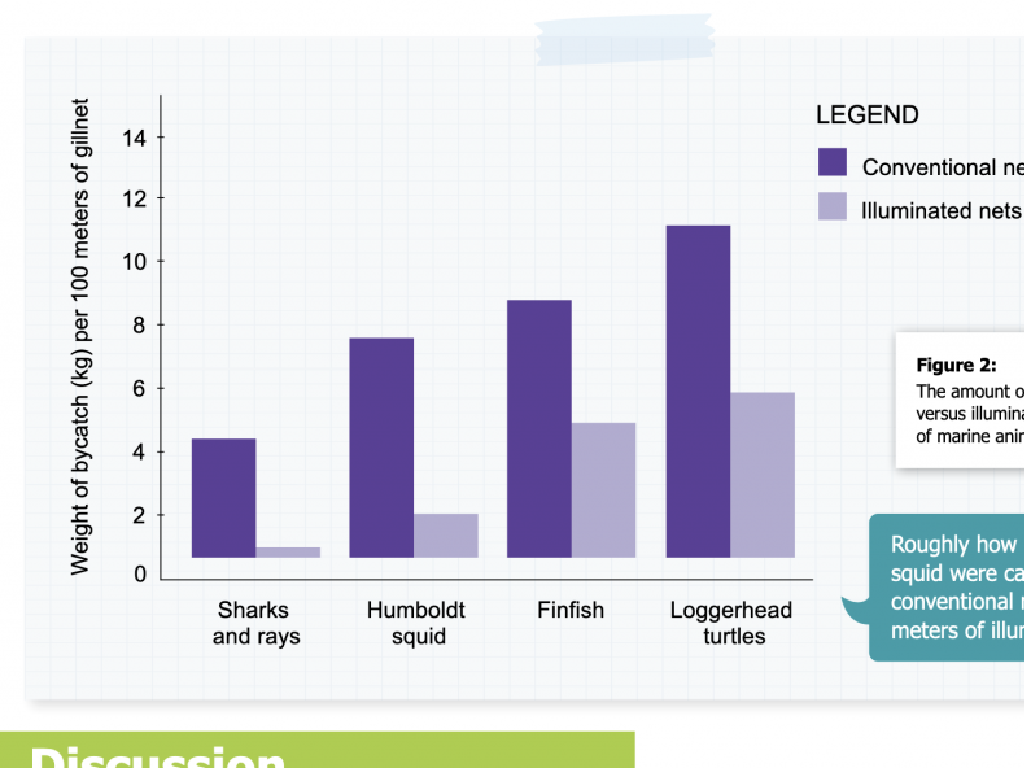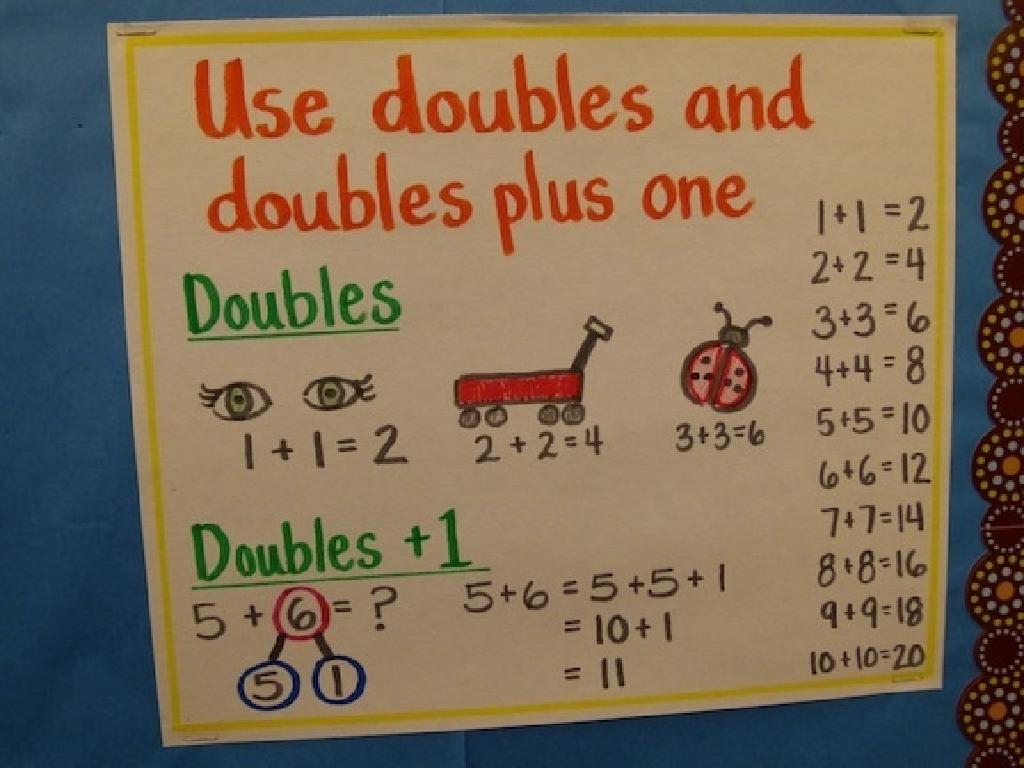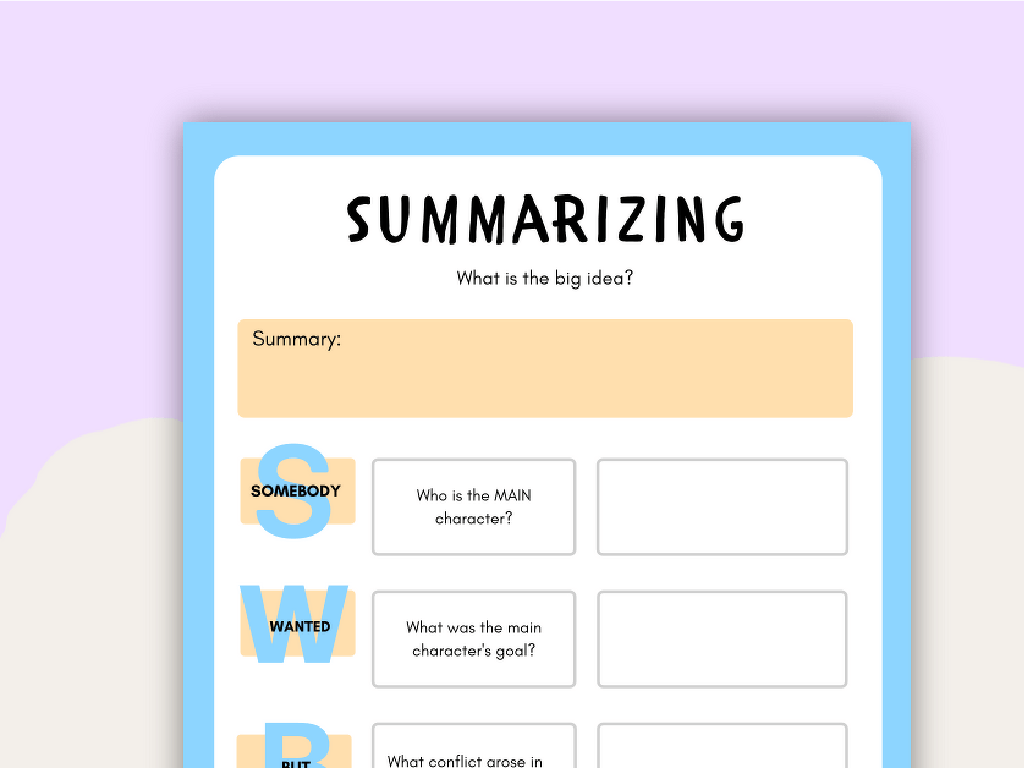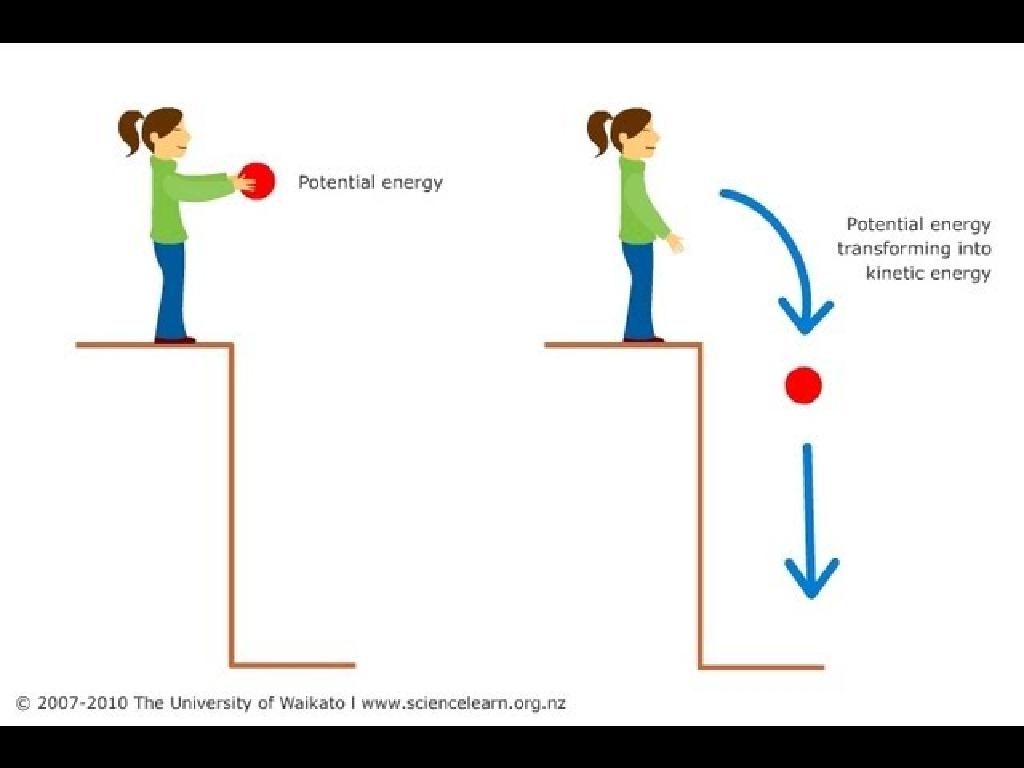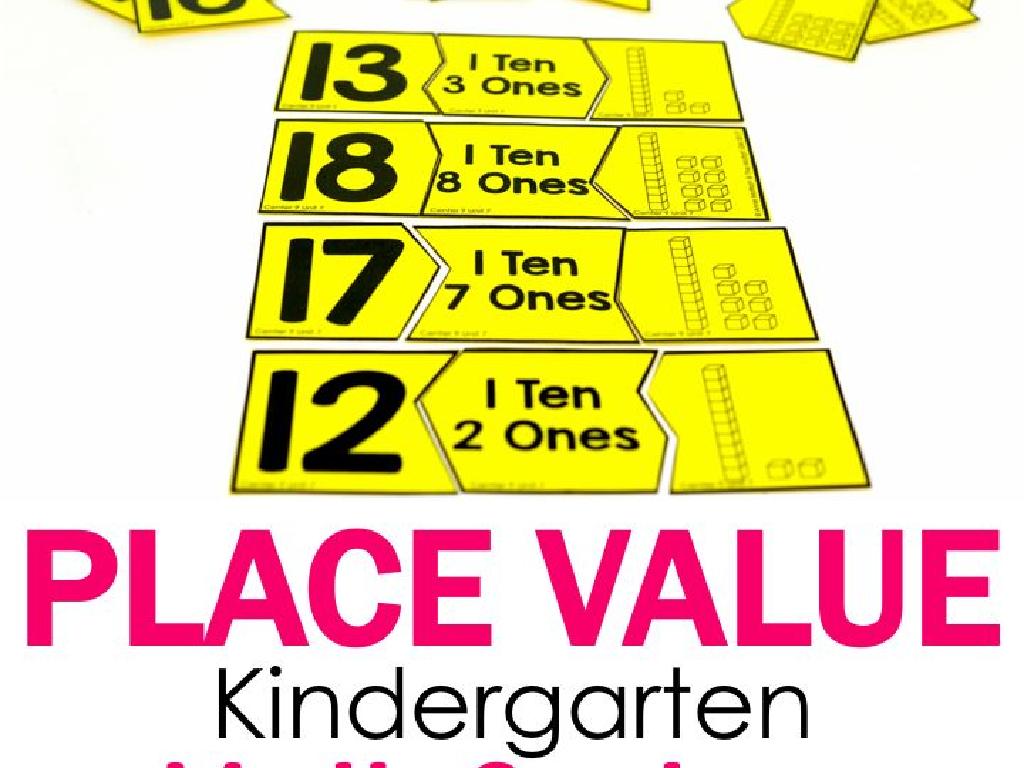Fewer And More - Compare By Matching
Subject: Math
Grade: Pre-k
Topic: Compare Groups
Summary: Introduce Pre-K students to the foundational math concepts of "fewer" and "more" through fun, hands-on matching and comparison activities. This interactive lesson builds early counting and reasoning skills as children compare groups of objects, participate in games, and explore quantities in their surroundings. With classroom hunts, show-and-tell, and visual aids, students develop essential number sense in an exciting and engaging way. Perfect for fostering early math exploration and vocabulary.
Please LOG IN to download the presentation. Access is available to registered users only.
View More Content
Math Adventure: Fewer and More
– Greet our young mathematicians
– Today’s quest: Fewer or More?
– Learn ‘Fewer and More’ with matching
– We’ll match items to see which group has fewer or more
– Get ready to play and learn!
– Fun activities to understand these concepts
|
Welcome the students warmly to create an inviting learning environment. Today, we will embark on a mathematical journey to understand the concepts of ‘fewer’ and ‘more’ through engaging matching activities. Introduce the idea that ‘fewer’ means a smaller number of items and ‘more’ means a larger number. Use real-life objects or illustrations to help children visualize and compare quantities. Prepare a set of playful activities where children can match and compare groups of items, such as toys or blocks, to reinforce the concepts. Encourage participation and celebrate their discoveries as they learn to differentiate between fewer and more items.
Understanding ‘Fewer’ in Groups
– ‘Fewer’ means not as many
– Let’s explore examples
– We’ll look at pictures to see ‘fewer’ in action
– Find the group with fewer items
– Compare two groups and choose the smaller one
– Practice with fun activities
– Use toys or blocks to learn
|
This slide introduces the concept of ‘fewer’ to Pre-K students. Start by explaining that ‘fewer’ is used to describe when there are not as many items in one group compared to another. Show visual examples using familiar objects, such as fruits, toys, or animals, to illustrate the idea. Engage the students by asking them to identify which of two groups has fewer items. Incorporate hands-on activities where students can physically group items to reinforce the concept. For example, give them a small number of blocks to sort into two groups and decide which has fewer. This interactive approach helps solidify their understanding of comparison by matching.
Understanding ‘More’ in Groups
– ‘More’ means having a greater number
– Comparing different groups
– Find the group with more items
– Look at two sets, count and see which is bigger
– Practice with examples
– Use toys or blocks to create groups and compare
|
This slide introduces the concept of ‘more’ to Pre-K students by explaining it as having a greater number of items in one group compared to another. Encourage the students to compare different groups of items, such as toys or blocks, to visually identify which group has more. Provide hands-on activities where students can practice counting and comparing groups. For example, set up stations with different numbers of objects and have students move around to each station to determine which has more. This will help them understand the concept of ‘more’ through direct interaction and comparison.
Matching Game: Fewer or More?
– Match objects to compare
– Observe objects on both sides
– Count to see fewer or more
– Use counting to determine if one side has a smaller or larger number of objects.
– Discuss our findings together
– Share what you found: which side had more? Which had fewer?
|
This interactive game is designed to help Pre-K students understand the concept of comparing quantities. Set up two groups of objects, one on the left and one on the right. Encourage the children to observe and count the objects in each group. They should determine if the groups have the same number of objects or if one has fewer or more. This activity will help develop their counting skills and their ability to compare sets of items. After counting, facilitate a discussion where the children can share their findings and reinforce the concepts of ‘fewer’ and ‘more’. Possible variations of the activity could include using different types of objects, using images in a book, or even comparing the number of sounds they hear.
Let’s Practice Together: Fewer or More?
– Observe two groups of items
– Count each group’s items
– Decide which has fewer or more
– Raise your hand to answer!
– Be ready to share your answer with the class
|
This slide is for an interactive class activity designed to help Pre-K students understand the concept of comparing quantities. Display two groups of items on the board or on a table where all students can see them. Encourage the students to count the items in each group aloud together. Then, ask them to decide which group has fewer items and which has more. Remind them to raise their hand when they know the answer, and then call on students to share their thoughts. This activity promotes participation, reinforces counting skills, and introduces the concept of comparison. Prepare different sets of items to ensure all students get a chance to participate. Possible variations of the activity could include using colorful objects, toys, or illustrations to keep the students engaged.
Class Activity: Fewer and More Hunt
– Find items in our classroom
– Work with a buddy
– Decide which has fewer or more
– Use words ‘fewer’ and ‘more’ to compare
– Share your findings with the class
– Tell us about what you found
|
This activity is designed to help Pre-K students understand the concept of comparing quantities by using the terms ‘fewer’ and ‘more’. Students will pair up and search the classroom for different groups of items, such as pencils, blocks, or books. They will then work together to determine which group has fewer items and which has more. After the hunt, each pair will have the opportunity to present their findings to the class, using the comparison words they’ve learned. For the teacher: Prepare different sets of items around the classroom before the activity. Ensure that there are clear examples of ‘fewer’ and ‘more’ for the children to find. Possible variations of the activity could include comparing the number of windows vs. doors, blue crayons vs. red crayons, or chairs vs. tables.
Show and Tell: Fewer and More
– Pairs present their items
– Identify groups with fewer or more
– Which pile is smaller, which is bigger?
– Discuss findings with the class
– Celebrate learning about comparison!
– Great work discovering through comparison!
|
This slide is for a class activity where students will engage in a ‘Show and Tell’ to explore the concepts of ‘Fewer and More’. Each pair of students will present their collection of items to the class and identify which group has fewer items and which has more. This activity helps students visually and practically understand the concept of comparing quantities. As a teacher, facilitate the activity by guiding the students to count and compare their items. Encourage them to use language related to quantity such as ‘less than’, ‘more than’, and ‘equal to’. After each presentation, praise their efforts to reinforce their learning. Prepare to offer assistance in case some students find it challenging to compare groups. The goal is to make the learning experience fun and interactive.
Conclusion: Fewer and More
– Understanding ‘Fewer and More’
– Fewer means a smaller amount, more means a larger amount.
– Importance of comparing groups
– Comparing helps us understand quantities and numbers better.
– Celebrating our math journey
– Keep exploring with math!
|
Today, we’ve learned about the concepts of ‘Fewer and More’ and practiced comparing different groups to identify which has fewer or more items. Understanding these concepts is crucial as it lays the foundation for mathematical reasoning and helps in developing counting skills. It’s also an essential part of everyday decision-making. Recognizing the difference in quantities is a skill that will be used in many aspects of life. I’m proud of all the students for becoming fantastic math explorers and encourage them to continue observing and comparing things around them. Keep looking for opportunities to count and compare in your daily life to strengthen your math skills!

